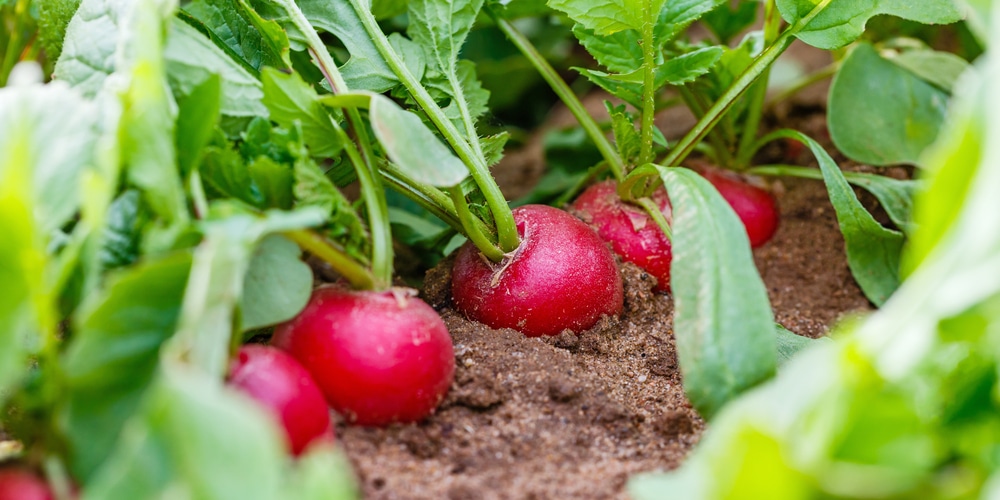
Zone 7 and 7b are mild climates perfect for cool-loving temperatures. However, to make the most out of the environmental conditions of these regions, you must know when is the right time to plant your crops to prevent potential frost damage or expose your veggies to warm temperatures.
If you are wondering if you can plant radishes in zone 7 and 7b, the answer is: “yes, and with excellent results.”
However, you will have to ensure your plants get all they need to survive. Luckily, radishes are relatively easy to grow and adapt to various soil and conditions. Still, one of the best ways to guarantee your success at growing these crops is knowing when to plant radishes in zone 7 and 7b. While sounding trivial, picking the proper date will make a difference in the outcome of your harvests. Here, we gathered all the information you should have when having a vegetable garden that includes radishes in these hardiness zones.
When To Plant Radish In Zone 7 and 7b
Zone 7 and 7b have a moderate growing window for gardening. The last frost date is around March. For fall crops, you should plant around mid-October. Of course, you should always check with your local weather to know the exact time of the year you should plan around to get your veggies at the proper time.
You can start your radishes plants in early February in zone 7 and 7b. You can even plant them in the fall, but you must suspend their growth in summer when temperatures are too hot for them to survive. In general, you should plant your radishes four to six weeks before the average date of the last frost. Because that is usually at the end of March in zone 7, early February is a safe enough period. The same applies for fall planting: count four to six weeks before the first frost date.
Don’t forget to plant your radishes in a sunny spot. Not enough sunlight will cause them to produce foliage rather than their delicious roots. Jump to the next section to discover more about our favorite growing tips for having healthy radish plants in your garden.
Growing Radishes
Radishes need rich and loose soil. These conditions allow them to absorb all the nutrients they need to thrive. Improve drainage with some mulch and mix compost if your ground is compact. You can even add some fertilizer to increase the nutrient content.
To improve your chances of getting healthy crops, consider practicing three-year crop rotation. The process involves planting radishes in the same spot every three years to prevent diseases and strengthen them. Sow radish seeds directly in the garden to avoid disturbing their roots. Also, space your plants at least 12 inches apart to allow enough space for growing. Crowded plants don’t grow well and will compete for nutrients: the results will be small and flavorless vegetables that you can’t use in anything. For continuous harvests in the late spring, keep sowing your radish seeds every ten days.
To get excellent results when growing your radishes in zone 7 and 7b, we recommend you to get the “French Breakfast” variety: it does well even in moderate heat, so you don’t have to worry about planting it at the right time. If you prefer growing large vegetables, try the “Daikon” species. This Japanese variety gets up to 16 inches long and does well in cooler climates. It can make a perfect fall crop if you know when to plant it.
Under proper conditions, you can harvest your radishes as soon as three weeks after you planted them. To know if the time is right, look at the roots: if they are about 1 inch at the soil surface, it is time to harvest!
When to Plant Radishes in Zone 7: The Bottom Line
As you can see, you can grow radishes in hardiness zones 7 and 7b. Knowing when to plant your vegetables is crucial to ensure they give you rich harvests. Because radishes are easy to grow, you won’t have to worry too much about them. However, you will have to ensure you provide them with the nutrients they need to survive and protect them from hot temperatures, which can cause them to wilt and develop a bitter taste.

